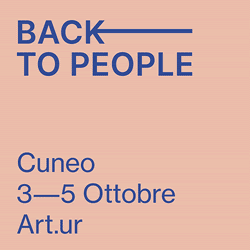
This third edition of Paris Internationale, which took place from 18th until the 22nd October 2017, left the the luxury and opulence of the private residences of the avenue d’Iena to move to a new site, the top four floors of a disused parking garage on what was once the site of the left-wing newspaper Libération.
Here below a conversation between Giulia Ponzano and Antoine Levi on the 2017 edition, whose new setting has provided a platform inclined towards curiosity, exploration, and attention.
GP – Paris Internationale, welcoming galleries and non-profits spaces in this unorthodox new location, blurred the line between fair and exhibition and established itself as an event which is a hybrid of a commercial initiative and an art project. What has been the aim of inviting this lively mix of commercial and non-profit spaces? Regarding the non-profit, why have you focused only the Parisians ones?
AL: Since the beginning of Paris Internationale we wanted to create a convivial and familiar context, but also a way to highlight realities than galleries in the art world, in which the off spaces are part of the cultural fabric, and who need help and/or visibility; they often are launching ramps for young artists where they can work without the pressure of the economical targets.
Paris has grown a lot in the last year in the field of contemporary creation in visual arts. Since the new location of Paris Internationale has a sense of romanticism for its recent (intellectual yet cruel) history in the heart of the city, we decided to give a vernacular direction but at the same time the illustration of the international window the local off spaces represent, as a manifesto of the city’s intense artistic activity beyond what is well known.
GP: Walking through the spiralling ramp of this brutalist building and discovering dynamic artists’ presentations fulfilled me with a joy of discovery and surprise. What themes or criteria informed your selection process?
AL: We are not a selection committee, we just meet very often to exchange new ideas, to comment what new things we saw and that could bring a plus to the project.
We proceed by inviting galleries we like, of course we cannot unfortunately invite everyone we like so we vote among us, it is as simple as this. We have no precise criteria, the galleries are mainly young or emergent but is it not the main pattern for us.
Since we invite the galleries without asking them to apply or to show such artist or another one, we feel they can work with a major liberty and express what they feel relevant and interesting to show. We believe this creates a shape of relax that breaks a certain pressure. The result is then up to everyone’s collaboration, the final panorama is what it is and the feeling of ease creates a unique atmosphere.


GP: How many visitors this third edition has attracted? How have been their reactions?
AL: I should ask our amazing co-directors Silvia Ammon and Clément Delépine, I think the audience raised 30% up from last year, which is very much positive.
The visitors were all very much positive and gladly surprised to walk through such an amazing building, whose aspect broke the scenography of the former two editions of the fair set in complex bourgeois town houses.
GP: At a time when art fairs became frenetic multi-industry circuses of efficient dealmaking, quickening their pace globally, Paris Internationale has established itself as a much more hospitable, charming and underground alternative. Can this be considered as a political act too?
AL: What is politic in art? How a fair can be politic? The relationship between people appreciating mutually each other’s works is at the basis of our project; the context and roots of Paris Internationale are profoundly linked to the city which is our everyday frame, and where we want to welcome people and share its unique landscape. We work together with FIAC, the local institutions and galleries associations, we do this for Paris and for the galleries, and through this concept we invest on the artists which are our supreme collaborators to give them the possibility – thanks to the relentless efforts of their galleries – to present their dreams and ideas in the best context possible.
GP : With a strong international presence and a growing number of visitors, what is your perspective on the fair’s expansion?
AL: Well, first we will take some day off to debrief, but our will is to continue on this direction, hoping the fair will give every year its own flavour and singularities. We believe the high quality of the presentation drags automatically new audience, new visitors, but also wins the loyalty of our usual followers. As we depend every year on the location of the space, we can adjust the project learning from the past editions. Slow and steady if I may say.














